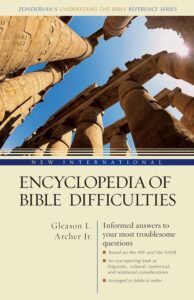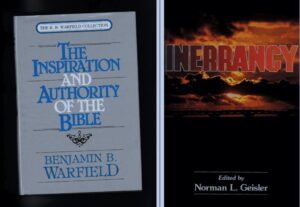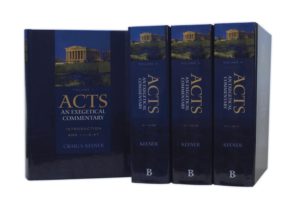 Inerrancy and Alleged Discrepancies of the Bible. Pt.2. KP10-IAB-09
Inerrancy and Alleged Discrepancies of the Bible. Pt.2. KP10-IAB-09
A. Discrepancies due to copyist errors related to numbers due to copyist or scribal error. Examples: 1) Did David capture 1,700 of King Zobah’s horsemen (2 Samuel 8:4), or was it 7,000 (1 Chronicles 18:4)? 2) In 1 Sam 13:5, how were there 30,000 chariots and only 6,000 charioteers? 3) 1 Kings 4:26 – How can this verse say Solomon had 40,000 stalls when 2 Chronicles 9:25 says he had only 4,000 stalls? 4) David’s famine was seven years (2 Sam. 24:13) or three years (1 Chron. 21:12)?
B. Alleged discrepancies arising from incomplete but complementary accounts: Did Judas die by hanging himself (Matthew 27:5) or by falling headlong and bursting open with all his bowels gushing out (Acts 1:18)?
C. Proper perspective on archaeological data and alleged discrepancies (Edwin Yamauchi).
D. Lessons
1) Proper interpretation is crucial in the affirmation of inerrancy:2) Scripture is its best interpreter in canonical context. Scripture priority over fragmentary historical data.3) Inerrancy not naïve or simplistic but highly nuanced Biblical exegesis and hermeneutics must also be highly nuanced
You may view the full video at:
Inerrancy and Alleged Discrepancies of the Bible. Pt.2.
 I. Doubts About the Authenticity of Paul’s Teachings
I. Doubts About the Authenticity of Paul’s Teachings


 Many critical scholars in Western universities suggest that the biblical Creation and Flood stories borrowed ideas from Ancient Near Eastern Texts (ANET). For example, the Creation story in Genesis must be influenced by the Babylonian creation story of Enuma Elish since the story in Genesis is briefer and the preserved records of Genesis belong to a later date. However, Kenneth Kitchen rejects this notion. He writes, “The common assumption that the Hebrew account is simply a purged and simplified version of the Babylonian legend (applied also to the Flood stories) is fallacious on methodological grounds. In the Ancient Near East, the rule is that simple accounts or traditions may give rise (by accretion and embellishment) to elaborate legends, but not vice versa. In the Ancient Orient, legends were not simplified or turned into pseudo-history (historicized) as has been assumed for early Genesis.”/1/
Many critical scholars in Western universities suggest that the biblical Creation and Flood stories borrowed ideas from Ancient Near Eastern Texts (ANET). For example, the Creation story in Genesis must be influenced by the Babylonian creation story of Enuma Elish since the story in Genesis is briefer and the preserved records of Genesis belong to a later date. However, Kenneth Kitchen rejects this notion. He writes, “The common assumption that the Hebrew account is simply a purged and simplified version of the Babylonian legend (applied also to the Flood stories) is fallacious on methodological grounds. In the Ancient Near East, the rule is that simple accounts or traditions may give rise (by accretion and embellishment) to elaborate legends, but not vice versa. In the Ancient Orient, legends were not simplified or turned into pseudo-history (historicized) as has been assumed for early Genesis.”/1/ Bart Ehrman’s Challenge to Evangelicals to Renew Studies on NT Introduction
Bart Ehrman’s Challenge to Evangelicals to Renew Studies on NT Introduction Question: Matthew cites Isa. 7:14 and says it is fulfilled by the birth of Jesus. However critical scholars argue that in the context of Isaiah 7, this verse is about a child born during the time of Ahaz. How would evangelical scholars like you respond to this critical scholarship?
Question: Matthew cites Isa. 7:14 and says it is fulfilled by the birth of Jesus. However critical scholars argue that in the context of Isaiah 7, this verse is about a child born during the time of Ahaz. How would evangelical scholars like you respond to this critical scholarship?